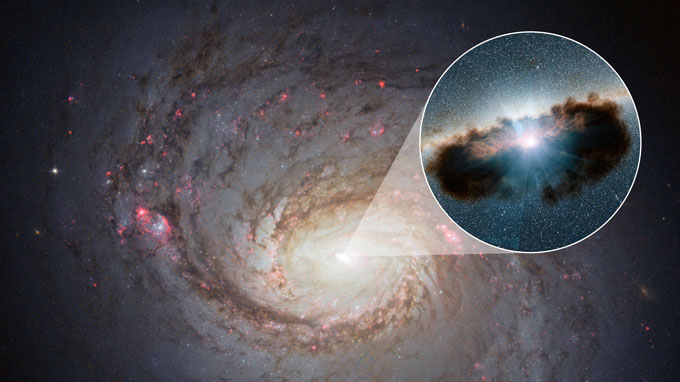Extreme Climate Survey
Scientific news is collecting questions from readers about how to navigate our planet’s changing climate.
What do you want to know about extreme heat and how it can lead to extreme weather events?
“I would say they could be the main contributor,” says astronomer Andrii Neronov of the Astroparticle and Cosmology Laboratory in Paris, who is a co-author of the study in Physical review papers. “I’ll make a reasonable bet on them now with the information I know.”
This was not the case just a few years ago. When astronomers first identified the Seyfert galaxy NGC 1068 as the likely origin of high-energy neutrinos in 2022, it came as a surprise to some. Many astronomers at the time did not think that this type of galaxy could produce neutrinos. Now, with compelling evidence that neutrinos come not only from NGC 1068 but from two other galaxies like it, NGC 4151 and NGC 3079, there is little doubt that active galaxies—defined as those with cores of supermassive black holes that erode quant. high-energy nuclei, called active galactic nuclei, may be capable producers of neutrinos.
“It is exciting to see active galactic nuclei emerging as a class of neutrino sources, especially those obscured by a surrounding layer of dust and gas as a source of high-energy neutrinos,” says astrophysicist Sreetama Goswami of the University of Nevada, Las Vegas. . Vegas, and a co-author on the new results in the June 10 arXiv.org preprint submitted to Astrophysical Journal Letters.
The new findings add to a flurry of theoretical research published recently that has made progress in tracing the precise origins of cosmic neutrinos. Several studies, including a paper accepted in Astronomy of Nature and published as a preprint on arXiv.org on May 30, have identified the region around the central supermassive black hole in NGC 1068 as the only place in the galaxy where neutrinos could be produced. If NGC 4151 and NGC 3079 are confirmed as neutrino factories, their high-energy particles are likely to be produced near their central black holes as well.

Previously, scientists have confidently identified only one other significant emitter of extragalactic neutrinos: a blazar (SN: 07/12/18). These cosmic giants are also active galaxies, but they have large jets of dense material where neutrinos are thought to be produced. Now, however, some astronomers think it may be the blazar’s black hole that is ultimately responsible.
“I think that dense cores, not jets, produce neutrinos,” says Francis Halzen, principal investigator of IceCube and a co-author in the June 10 arXiv.org paper. “These may be in Seyferts, flat-spectrum radio quasars [types of blazars]or anything else with an obscuring black hole.”
Kohta Murase, a theoretical physicist at Penn State University who has done extensive research to identify the neutrino source of NGC 1068, has long thought that the black hole hearts of these galaxies are potential neutrino mills. “One of the promising places for neutrino production is the corona, which is a very hot region surrounding the black hole,” he says. “If this is confirmed, it could give us a clue to understanding the physical properties of the corona.”
Along with debating where neutrinos are produced in active galaxies, astronomers are also debating which types of active galaxies are the most important producers of neutrinos. Some scientists claim that jetless active galactic core galaxies, such as the Seyferts, may produce almost all extragalactic neutrinos. Other researchers say that blazars are necessary to explain particularly high-energy neutrinos. Or perhaps there are more unidentified neutrino-bursting objects yet to be discovered.
The consensus among astronomers is that active galaxies with supermassive black holes are probably a large source of high-energy neutrinos, but exactly how large is still unknown.
#finally #source #mysterious #highenergy #neutrinos
Image Source : www.sciencenews.org